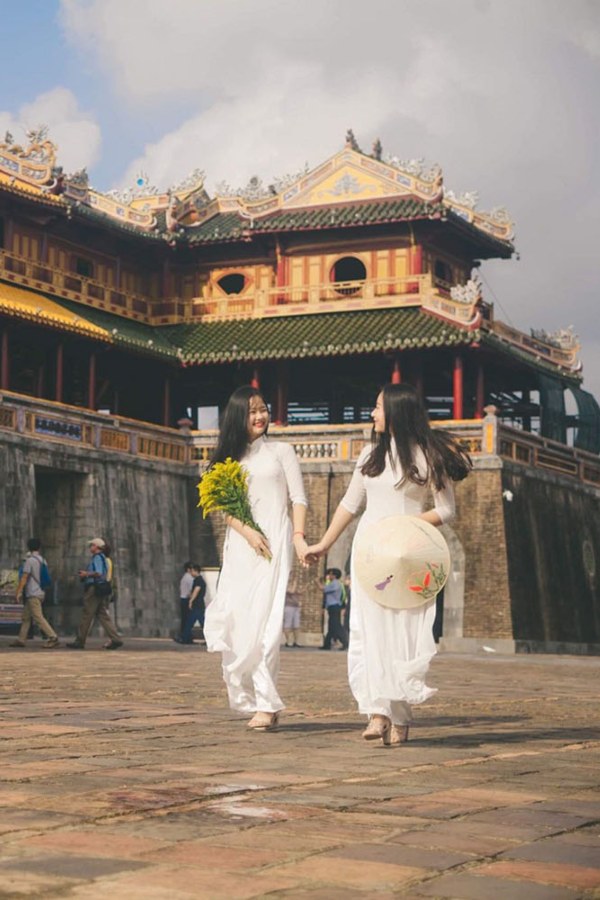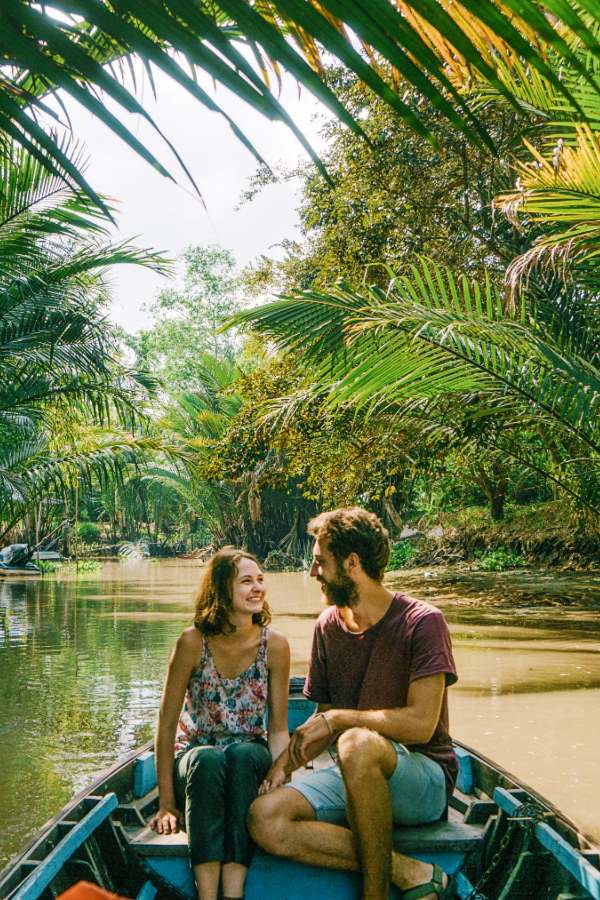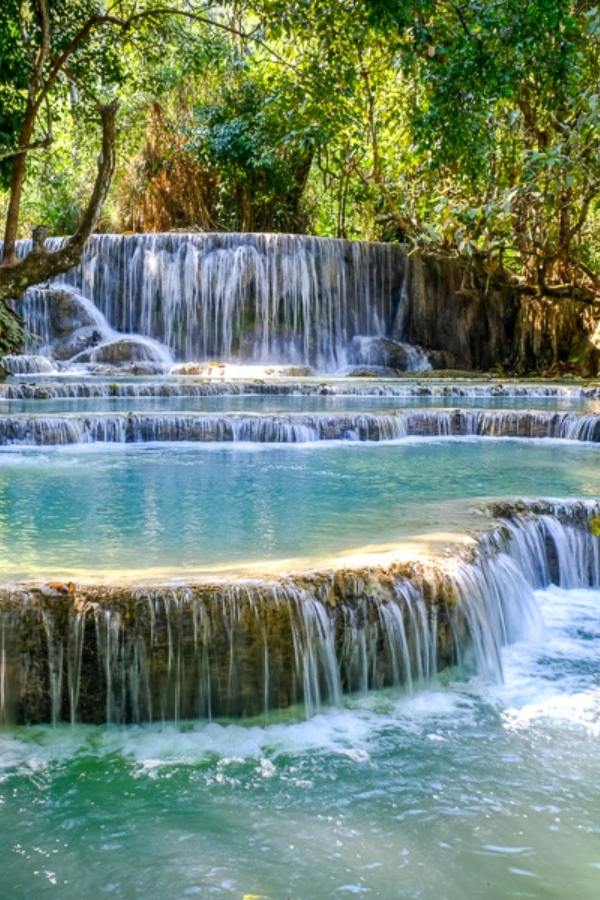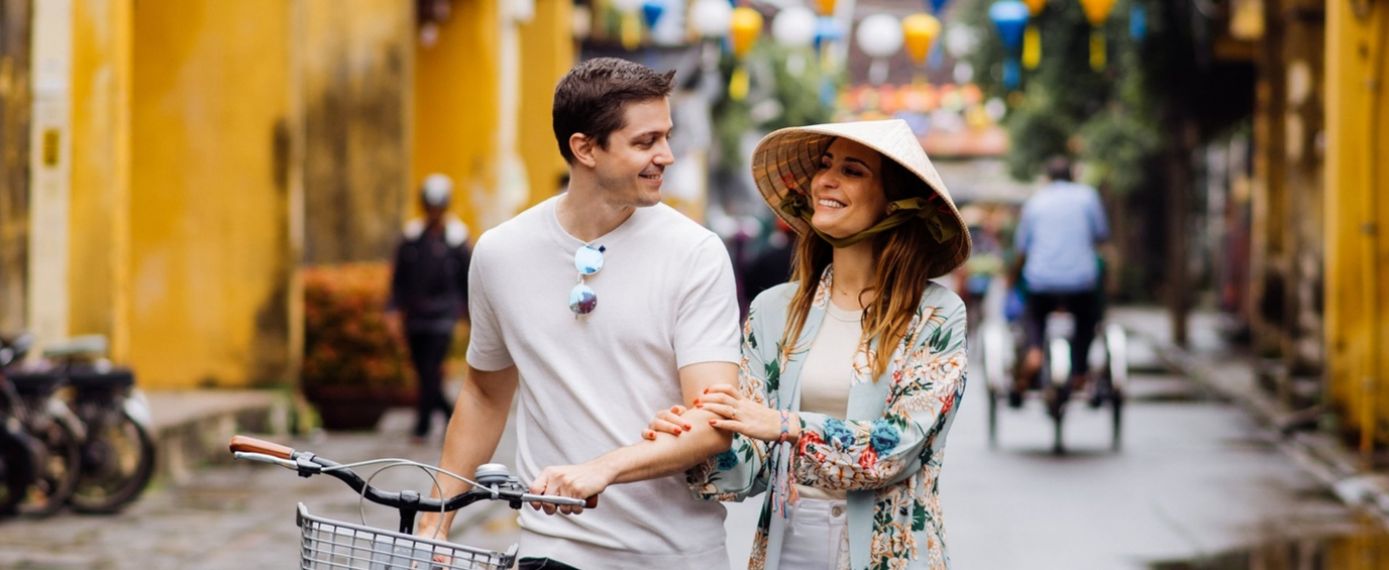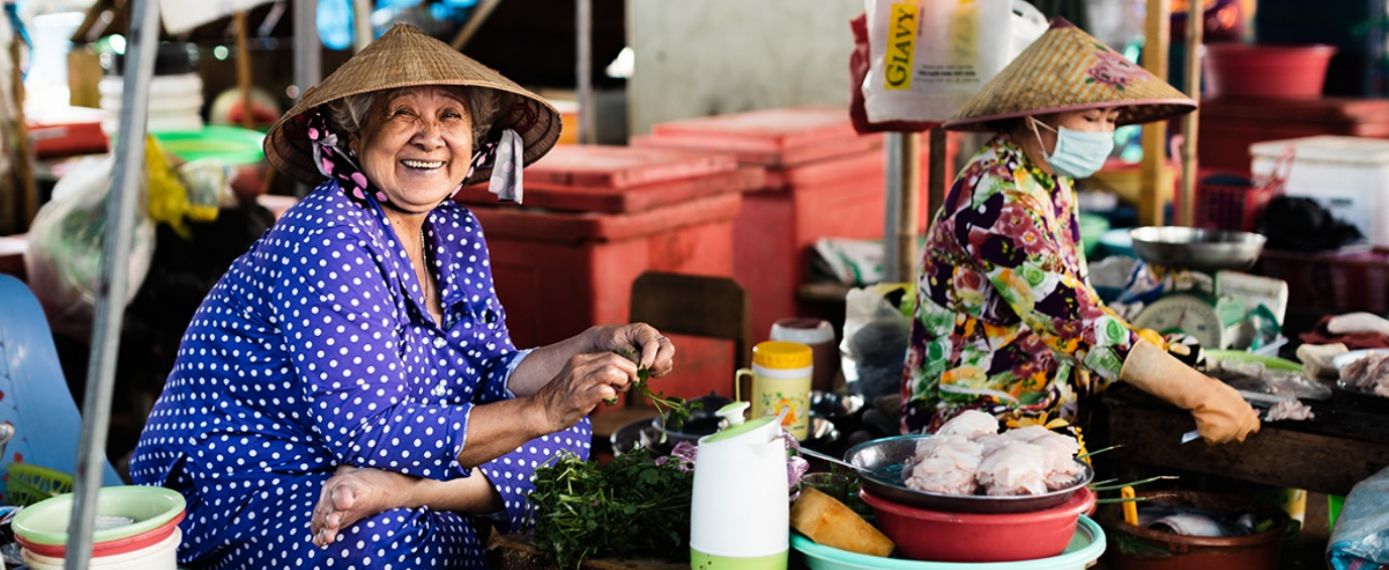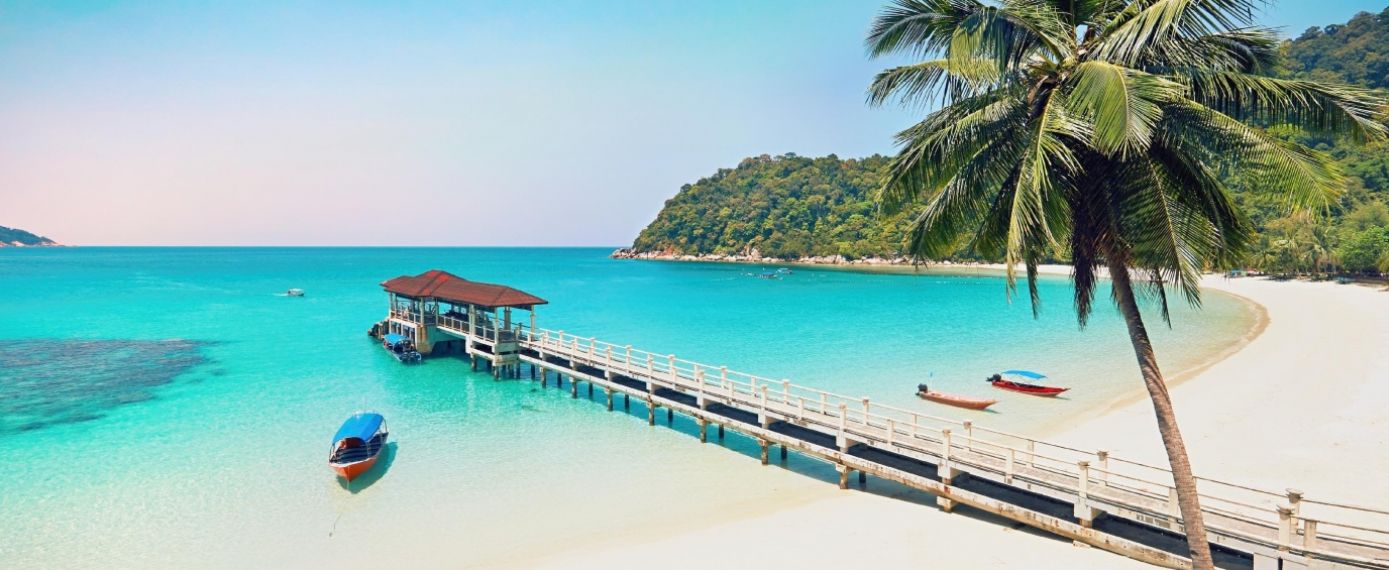
This 16-day Vietnam and Laos Exploration will surely satisfy your desire of discovering. Vietnam and Laos are two neighbor countries in Indochina peninsula, not only sharing the same borders but also having some common things such as the piece and quite, long-lasting history and friendly people. With rivers, temples, markets, and ancient streets, this fascinating trip is guaranteed to leave you unforgettable memories about these two beautiful countries.
This 16-day Vietnam and Laos Exploration will surely satisfy your desire of discovering. Vietnam and Laos are two neighbor countries in Indochina peninsula, not only sharing the same borders but also having some common things such as the piece and quite, long-lasting history and friendly people. With rivers, temples, markets, and ancient streets, this fascinating trip is guaranteed to leave you unforgettable memories about these two beautiful countries.
Highlights of this Tour
Our tour includes
Stay at
Hotel(14 nights), Cruise(1 night)
Read more...Transfers
Travel by private & shared vehicle with driver according to daily schedule
Read more...Local Team
Private guides, drivers, your own travel expert
Read more...Meals
Daily scheduled meals including breakfast at hotel and lunch at local restaurant
Read more...Activities
24 Interesting Experiences
Read more...Services
In-tour offerings including entrance fees, boat trips, in-tour flights...
Read more...Stay at
Hotel(14 nights), Cruise(1 night)
Read more...Transfers
Travel by private & shared vehicle with driver according to daily schedule
Read more...Local Team
Private guides, drivers, your own travel expert
Read more...Meals
Daily scheduled meals including breakfast at hotel and lunch at local restaurant
Read more...Activities
24 Interesting Experiences
Read more...Services
In-tour offerings including entrance fees, boat trips, in-tour flights...
Read more...Trip Overview
Vietnam and Laos Exploration - 16 days
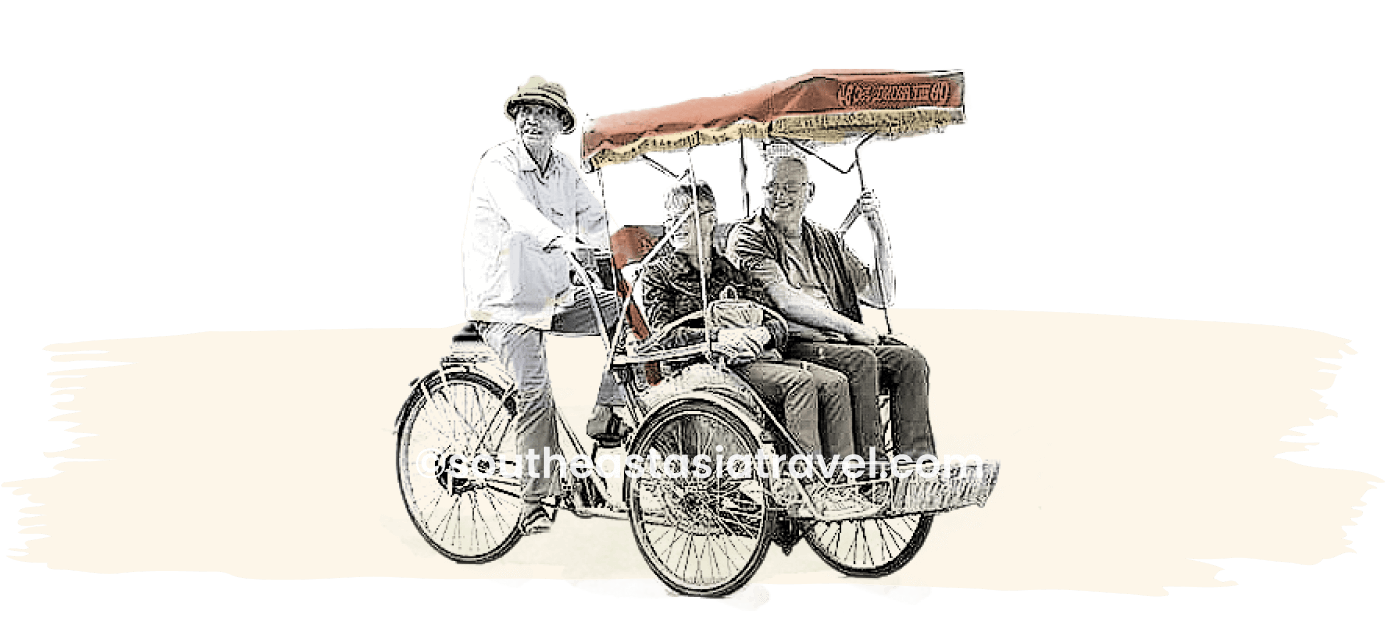
Hanoi
Halong Bay
Hoi An
Hue
Ho Chi Minh
Mekong
Vientiane
Vang Vieng
Luang Prabang

With over 15 years of experience, our team will help you choose the perfect for your adventure.

Authentic

Flexible

Persionalized

24/7 Support


Destinations of this tour
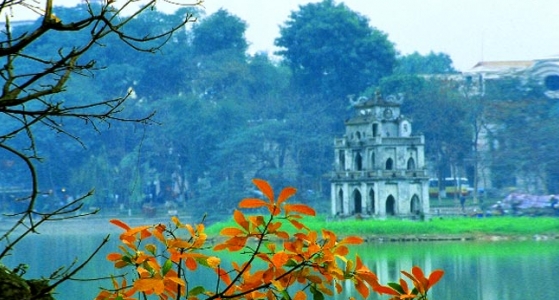
Perched on the banks of the Red River, Hanoi is Vietnam's capital and one of the world's most ancient cities. Its beauty lies in its liveliness of bustling streets where workshops and cafes spill out onto the streets and roadsides. As the intersection point where east meets west, Hanoi is a fascinating mix of old and new, Asian and European. With Chinese and French influences, an ancient culture, colonial architecture, broad tree-lined boulevards and beautiful lakes, the iconic architectural appearance of the Old Quarter and the elegance of the French Quarter, Ho Chi Minh’s Mausoleum and the Temple of Literature, etc... gives Vietnam’s capital city a unique charm of the ancient and modern. Hanoi is also home to one of Asia’s strong indigenous culinary traditions, with bustling wet markets and a rowdy street-food culture, as well as some five star international dining options. It is also very affordable by urban Asian standards, with the majority of hotels and restaurants offering plenty of value.
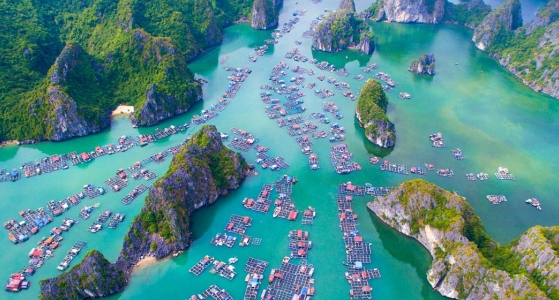
Halong Bay, listed as a UNESCO World Heritage Site in 1994, is located 170km east of Hanoi. It is made up of three neighboring bays: Halong, Lan Ha and Bai Tu Long bays, although Halong Bay is undeniably the most famous and most well-known of the three. Widely considered a natural wonder of the world, the UNESCO World Heritage Site is breathtaking with thousands of majestic limestone, peaks and islets rising dramatically out of the sparkling emerald waters of the bay. The most common way to explore is by taking an overnight night cruise or day-trip which cruises among the limestone pillars and islets. Many also include an island drop off and cave explorations. Visiting floating villages in the area gives a chance to interact with the local community whose livelihoods depend on the waters. Another way to immerse oneself close up in the bay is by kayaking near and around the limestone pillars and some of the caves that are possible to enter by kayak.
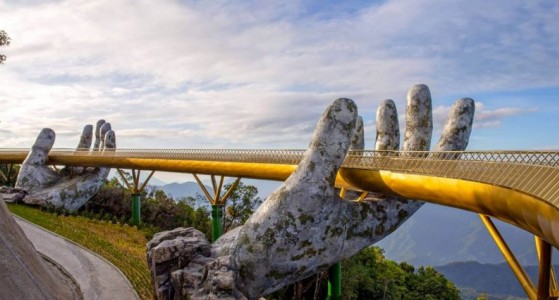
Da Nang is the commercial and educational center of central Vietnam and the largest city in the region. It is also the tourism hub on the west coast blessed with beautiful sunsets against a backdrop of lush mountains. This port city on the South China Sea has large areas of soft, ivory-white sand and clear blue waters making it an ideal place for a beach vacation and outdoor activities such as surfing, snorkeling, kayaking and jet-skiing. Da Nang is in easy reach of several UNESCO World Heritage Sites such as Hoi An ancient town, Hue and the My Son Sanctuary.
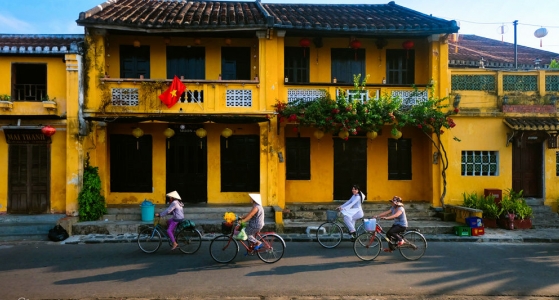
One of the oldest cities in Asia, Hoi An town is in central Vietnam and was declared a UNESCO World Heritage Site in 1999 thanks to its 800 historic buildings. Today, its iconic yellow ochre facades, a quaint riverfront promenade, pedestrian-friendly streets, and hundreds of colorful lanterns that light up the town every evening are a magnet for local and international visitors. Due to extremely well-preserved heritage architecture, Hoi An has an irresistible charm. The Japanese merchant houses, congregation halls of the former Chinese communities and even the warehouses hold the memory of where and when traders from various communities across Asia gathered. Hoi An is one of Vietnam’s most favorite destinations with something for every one. A quaint town perfect for strolling, shopping, and dining; awesome beaches and a perfect mix of countryside and villages which can be explored by bicycle or motorbike.
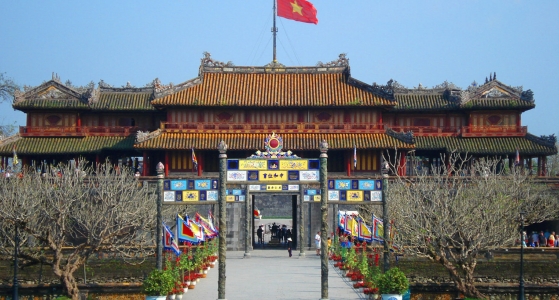
Hue, the former royal capital under the Nguyen Dynasty is based in central Vietnam and is one of the oldest Vietnamese cities. Set on the banks of the Perfume River, this historical city is home to the Imperial City which became a World Heritage Site in 1993. Apart from the remnants of Vietnam war, Hue is a hub of rustic, ornate royal tombs hidden away in sublime jungle settings, an imposing citadel with carefully restored gardens and palaces, and iconic pagodas. Easy going and laid back, Hue is an ideal destination for history and nature lovers and can easily be explored on foot, by bicycle or motorbike.
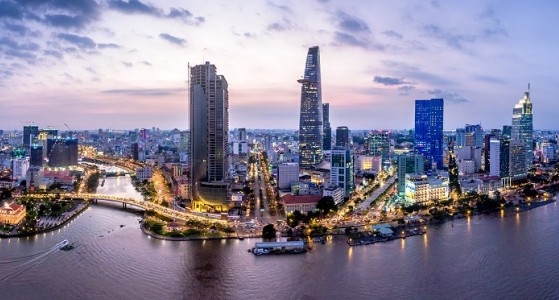
Commonly known as Saigon, Ho Chi Minh City in southern Vietnam is the country’s largest city and the financial and economical capital. This is a city full of surprises. Chaotic traffic blends with peaceful pagodas, parks, multi-style coffee shops and whole neighborhoods hidden down tiny alleyways. Icons of the past endure in the middle of the city’s vast urbanization. The ornate Saigon opera house, Hôtel de Ville - former French city hall, broad boulevards leading to the Saigon River and the gracious stucco villas are reminders of French-colonial times. In addition, the Chinese influence is also evident particularly in Cholon district (the city's Chinatown), while modern skyscrapers and international hotel chains that dot the skyline symbolize Vietnam's fixation on the future.
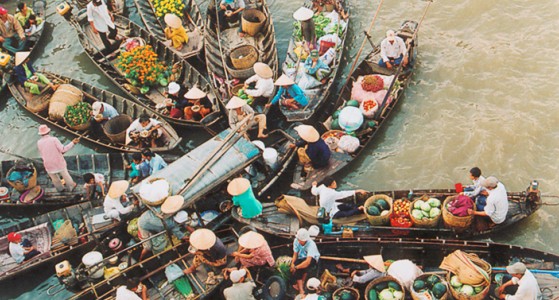
The Mekong Delta, located in the southernmost territory bordered by Cambodia, is the most fertile land in Vietnam. This is a region of unrelenting beauty - nicknamed the 'rice bowl' of Vietnam, where over 50% of Vietnam’s rice is grown. It is home to a unique ecosystem with diverse communities and ethnicities, and there are few places like this in the world. One the best, if not the best, ways to experience this area is to take a boat trip (1 day or a few days with staying overnight in local homestays) along the Mekong River's twisting capillaries of tropical canals, mangroves, past rice paddies, floating markets, where life on and off the river merge into one.
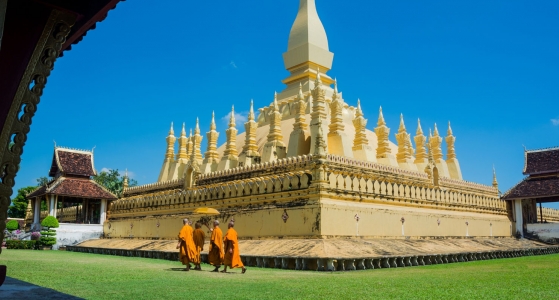
Vientiane is one of the most laid-back capital cities in Southeast Asia. Unlike the bustling streets and concrete jungles of other capital cities like Bangkok and Hanoi, Vientiane feels more like a small quiet town than a capital city. Since it appears relatively untouched by modernisation, with distinctly low-rise architecture and modest urbanization, numerous tree-lined boulevards, the city receives far fewer tourists than its neighboring counterparts. Situated in the bend of the Mekong River, close to the Thai border, Vientiane was virtually destroyed by the Siamese army in the 1820s after an unsuccessful rebellion. When Laos was incorporated into French Indochina (the Indochinese Union) in 1893, the French colonists redesigned Vientiane; hence the French influences around every corner, such as with tree-lined streets, wide boulevards and quaint cafes ideal for people watching. Despite the city having less famous sights to see, Vientiane is best appreciated for its laidback atmosphere, French colonial architecture and smattering of revered Buddhist temples.
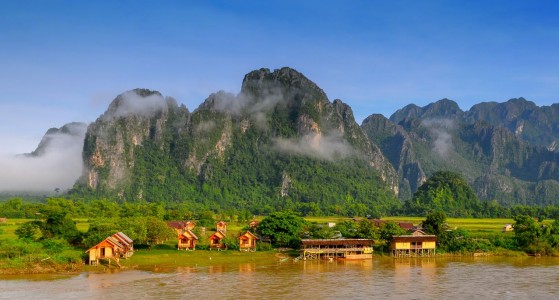
Vang Vieng, in central Laos, is midway between Vientiane and Luang Prabang. The small town is located in a truly beautiful area, surrounded by limestone karsts and rice fields, a river, and some nearby caves. What was once a party town, is now the adventure capital of Laos. From rock climbing to kayaking, hiking and mountain biking, as well as the blue lagoons, this is a town with tons to offer the adventure-seeking travelers. Vang Vieng is home to some of the most scenic motorbike routes in Asia which is one of the best ways to see all the sights. Rent a motorbike and drive the loop snaking past blue lagoons 1, 2 and 3, through local villages, past rice fields and stunning scenery, as well as many photo viewpoints. The road is tarmacked until it becomes a dirt track. The best time to visit Vang Vieng is between October to February, when the weather is not hot, and the humidity is manageable. The Nam Song River, lakes and small waterfalls will be in full flow after the rainfall.
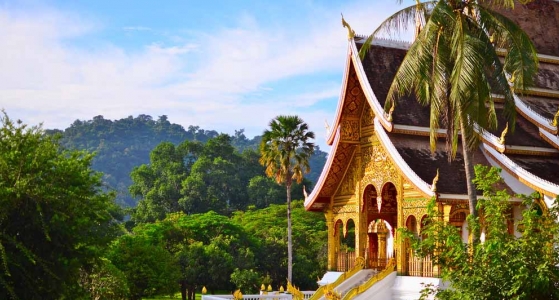
Luang Prabang is a small but vibrant town in the heart of northern Laos. It is adorably picturesque with glittering temples, a mix of traditional Lao wooden houses and hints of European architecture, colorful markets and quaint streets famous for the daily sunrise alms giving ritual where food is offered to the monks. Luang Prabang’s picture postcard image includes French-style cafés, bakeries, restaurants and former French villas with green shutters, the town is a fascinating legacy to when Laos was part of French Indochina. This town is one of the most favorite destinations in Laos, this place has a lot to offer, from dozens of temples, stunning waterfalls, French colonial architecture, bustling night markets to river cruises. On the outskirts are vibrant rice fields and traditional local villages. Luang Prabang was declared a UNESCO World Heritage Site in 1995, and it is also the birthplace of numerous Laotian rituals.
OTHER TOURS YOU MAY LIKE
Vietnam is a dream destination for newlyweds, offering the perfect backdrop to enhance your honeymoon memories or celebrate a special anniversary. This carefully curated 14-day itinerary is designed for couples seeking romance, tranquility and unforgettable experiences. From the vibrant energy of Ho Chi Minh City to the peaceful riverside villages of the Mekong Delta, you will immerse yourself in the country’s rich culture in Hanoi and Hoi An, admire the breathtaking scenery of Halong Bay, and unwind on the sunny beaches of Danang. Let us make every moment of your honeymoon truly magical!
Only From $2184/person
All Inclusive ServiceThis Tour
Embark on an exciting journey from the Mekong Delta to Central Vietnam, where each stop offers a unique and immersive experience. Cruise along the tranquil Mekong River, feel the vibrant energy of Saigon (formerly known as Ho Chi Minh City) and immerse yourself in the timeless charm of Hoi An, one of Asia’s most captivating destinations. Along the way, indulge in a variety of rewarding activities - watch local artisans craft traditional handicrafts, wander through bustling floating markets to mingle and bargain with merchants, unwind with a herbal foot bath, and master the art of cooking delicious Vietnamese specialties. Join us and create unforgettable memories on this extraordinary adventure!
Only From $1780/person
All Inclusive ServiceThis Tour
Malaysia, a diverse country renowned for its wonderful architectural wonders, abundant cultural landmarks and historical sites, is the starting point of this 17-day journey. The adventure will bring you to Penang, a melting pot of religion and cultures, passing through the vibrant city of Langkawi and the modern cityscape of Kuala Lumpur. Then travel to Vietnam, where you’ll soak in the bustling hub of Hanoi, witness the breathtaking natural scenery of Halong Bay, and experience a more traditional way of life in the Mekong Delta. Join us and enjoy a sojourn of amazing travel destinations in Malaysia and Vietnam.
Only From $2644/person
All Inclusive ServiceThis Tour

Customize this tour with us!


Adventure Travel Trade Association


American Society of Travel Agents


Family Travel Association


TripAdvisor


The guardian


World Travel Awards
ABOUT US
Why Us Trusted Travel Company What Makes Us Different Meet Our Team Southeast Asia Travel Guide Southeast Asia Tour Highlights Pre-departures Deposit & Payment Cancellation Policy Terms and Conditions Contact UsOur Destinations
Vietnam Tours Cambodia Tours Thailand Tours Indonesia Tours Malaysia Tours Philippines Tours Laos Tours Singapore Tours Myanmar ToursMulti-country
Vietnam Cambodia Tours Vietnam Cambodia Laos Tours Vietnam Thailand Tours Vietnam Cambodia Thailand Tours Thailand Malaysia Tours Thailand Malaysia Indonesia Tours Indonesia Thailand Tours Indonesia Malaysia Vietnam Tours Southeast Asia Tours 26 - 30 Days Southeast Asia Tours 18 - 26 Days Southeast Asia Tours 12 - 18 DaysTravel Themes
Best Southeast Asia Tours Southeast Asia Heritage & Culture Tours Southeast Asia Nature & Wildlife Tours Southeast Asia Family Tours Southeast Asia Honeymoon Tours Southeast Asia Adventure & Outdoor Tours Southeast Asia Beach & Island Tours Southeast Asia Cruise Tours Southeast Asia Tours 8 - 12 Days Southeast Asia Tours < 8 DaysSOUTHEAST ASIA TRAVEL COMPANY LIMITED
As local Southeast Asia Tour experts with over 15 years of experience, Southeast Asia Travel company has built a solid reputation as experts in designing custom tours across Southeast Asia including Vietnam, Laos, Cambodia, Thailand, Singapore, Malaysia, Indonesia, Myanmar, Philippines... Every Southeast Asia tour we offer is exclusively private, ensuring flexibility to suit individual preferences.
Read more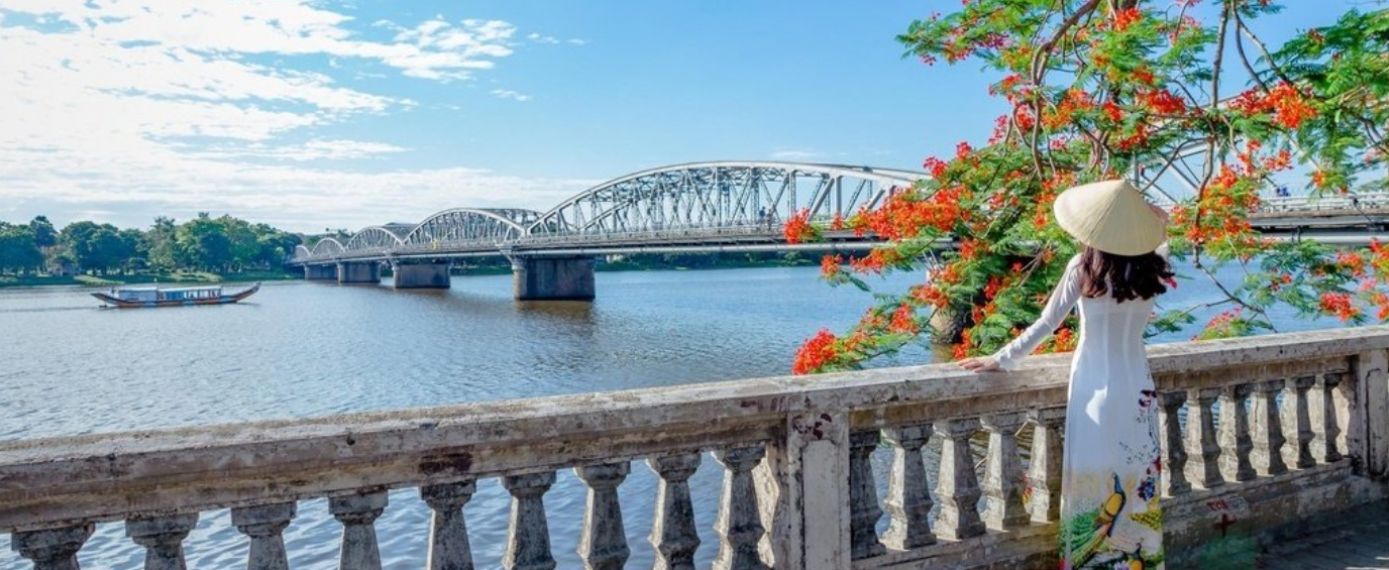

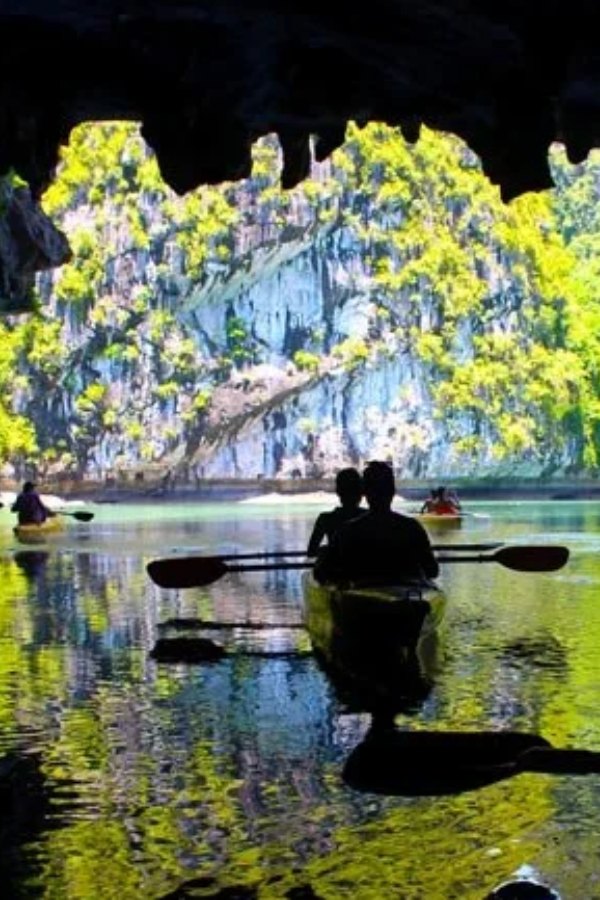
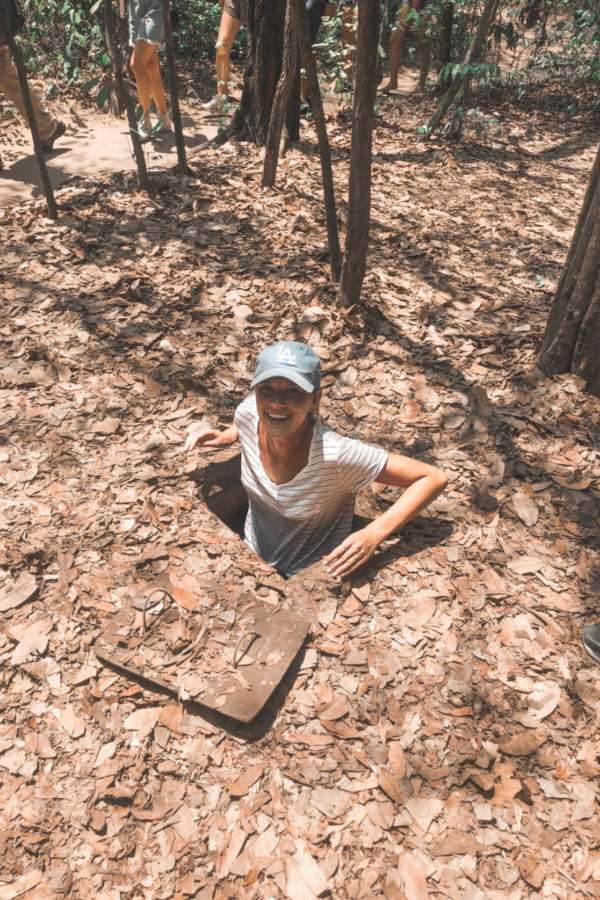
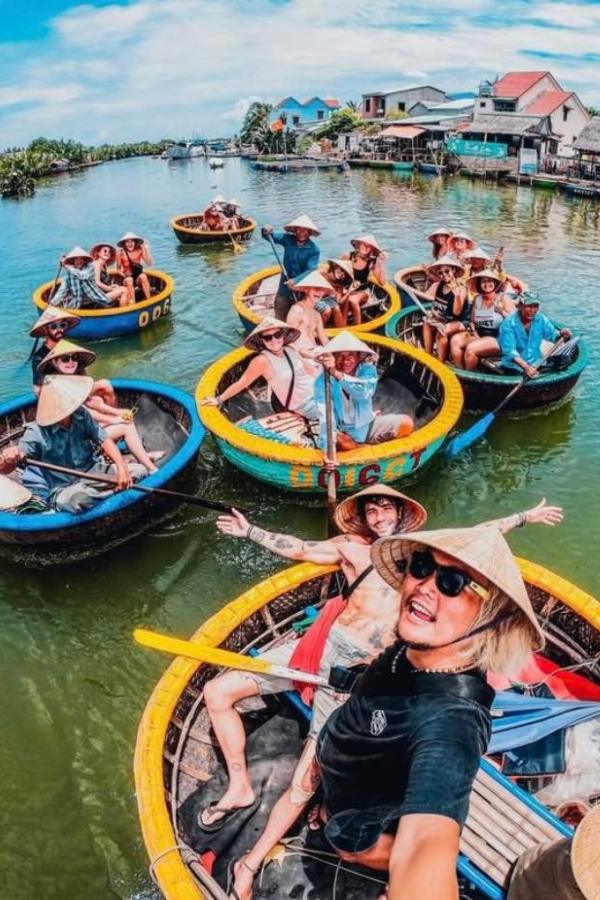
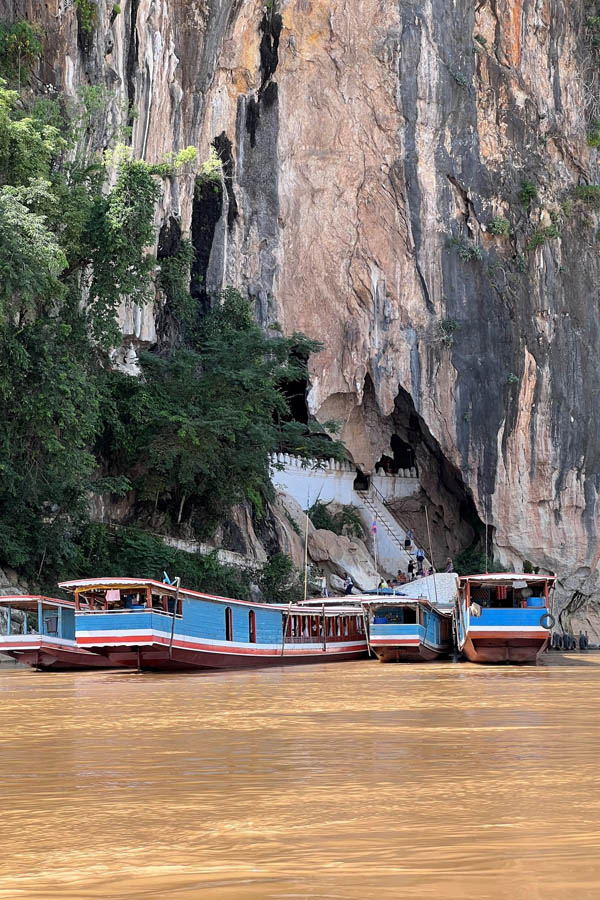
-1714721484.jpg)
-1714491404.jpg)
